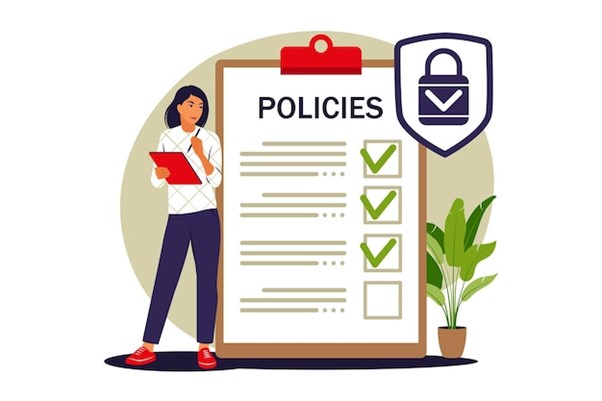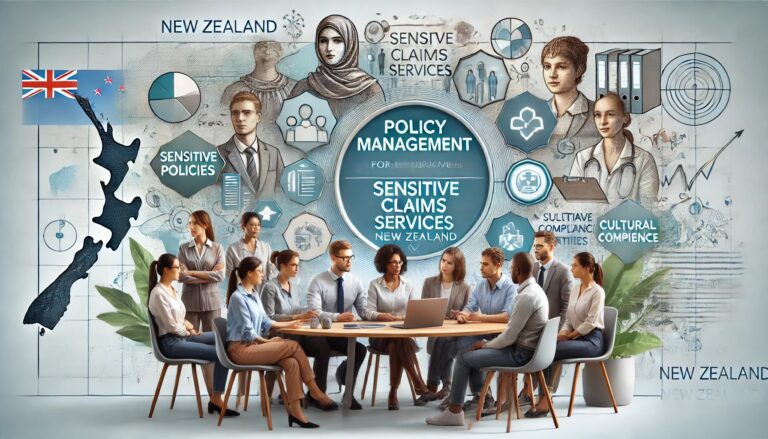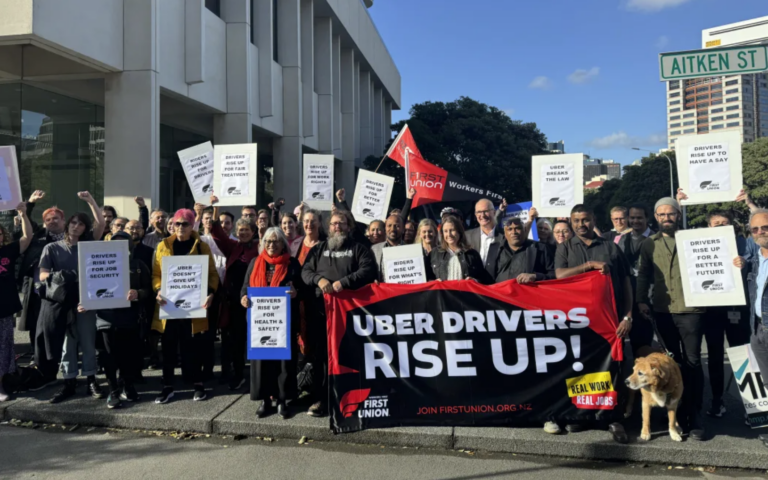Organisational Policy and Procedures
The Risks of Outdated Policies: What Your Organisation Needs to Know
In today’s fast-paced environment, staying effective means keeping every aspect of your operations up to date – especially your policies.
Outdated policies can lead to more than inefficiencies; they can result in significant financial, reputational, and operational risks. This is particularly important for any business and agency when resources are limited, and trust is paramount. Let’s explore the risks of outdated policies and why proactive policy management is essential for every organization.
Financial Risks: The Hidden Costs of Outdated Policies
One of the most immediate consequences of outdated policies is non-compliance with laws and regulations. Regulatory frameworks evolve regularly, and failure to keep policies aligned can result in:
- Hefty Fines and Penalties: Community and not-for-profit agencies are not immune to regulatory oversight. Non-compliance with laws such as health and safety regulations, privacy law, or employment standards can lead to fines and penalties that strain already tight budgets.
Example: In Aotearoa, failure to comply with employment law can lead to personal grievance action and ultimately to financial sanctions; non-compliance with the Health and Safety at Work Act 2015 can lead to fines of up to $600,000 for individuals or $3 million for organisations.
- Funding Risks: If you’re dependent on government or philanthropic funding, non-compliance or poor policy management can jeopardise funding agreements.
Example: Contracts with government agencies to provide services typically require compliance with regulatory standards like the Social Sector Accreditation Standards, Ngā Paerewa Health and Disability Service Standards. If you’re a business, iwi or community agency contracted to provide community housing, you must comply with the Performance Standards….. If you don’t keep your policies updated, this can lead to non-compliance with these standards and ultimately, result in loss of funding. t
- Increased Insurance Premiums: Non-compliance or repeated claims stemming from inadequate policies can raise insurance costs, which can be particularly burdensome for not-for-profits.
Reputational Risks: Outdated Policies Damage Trust
For all businesses and agencies, a good reputation is important. Outdated policies can jeopardise this and severely damage trust among stakeholders, current and potential clients, donors, and the public:
- Negative Publicity: A privacy breach or safety violation resulting from an outdated policy can lead to negative media coverage, harming your organisation’s credibility.
- Loss of Stakeholder Confidence: Funders, partners, whānau and community expect organisations and businesses want to deal with creditable and trustworthy organisations. Outdated policies can signal negligence and erode trust and confidence of staff and actual and potential clients, partners and funders.
- Impact on Volunteer Engagement: Community agencies often rely heavily on volunteers. However, volunteers may hesitate to support organisations with poor policy management, perceiving it as disorganized or unsafe.
Operational Risks: Efficiency Suffers Without Updated Policies
Outdated policies can hinder day-to-day operations, leading to inefficiencies and disruptions:
- Confusion Among Staff and Volunteers: Policies that are unclear or out of sync with current practices create confusion and inconsistent application.
- Delays in Decision-Making: Outdated policies may not address new challenges or scenarios, slowing decision-making processes. (See Good Decisions need Good Policies.)
- Increased Errors: When policies fail to reflect current best practices or technological advancements, errors are more likely, impacting service delivery.
The Benefits of Updating Policies
Keeping policies current isn’t just about avoiding risks; it’s about empowering your organisation and business to succeed. Updated policies:
- Enhance Compliance: Proactively address legal and regulatory requirements.
- Improve Efficiency: Provide clear guidance to employees and volunteers, reducing confusion and errors.
- Build Resilience: Prepare your organisation to adapt to changes and challenges effectively.
Best Ways to Manage These Risks
Effectively managing the risks associated with outdated policies requires a proactive and systematic approach. Here are some best practices:
- Schedule Regular Policy Reviews: Set a timeline to review each policy, typically annually or whenever major regulatory updates occur.
- Leverage Technology: Join The Policy Place online policy service for policies that support your compliance and are regularly reviewed and updated for legal and other regulatory changes. With your policies taken care of, you can focus on policy implementation (Check out the benefits here.).
- Engage Diverse Stakeholders: Gather and include input and feedback from your stakeholders like clients, kaimahi/staff and community partners when updating your policies and seek out cultural and industry expertise in areas it is needed.
- Provide Ongoing Training: Ensure all your kaimahi and volunteers are trained and have a good understanding of your policies and how to access them. You can’t rely on your policies and procedures with staff and expect compliance if they don’t know about them!
- Conduct Audits: Arrange for checks and audits of case files and other documentation to ensure that policies are complied with. Where there is non-compliance, address it and strategise to prevent recurrence.
- Document and Communicate Updates: Clearly document any changes to policies and communicate them effectively across your organisation to avoid confusion. As a member of The Policy Place we keep your policies updated and keep you informed about updates.
How We Can Help with Policy Management
At The Policy Place we specialise in keeping your policies compliant, relevant, and effective. Our services include:
- Policy Development: We provide core policy content to support agencies to comply with the law and other regulations and to meet good sector and industry practice.
- Policy Monitoring & Review: We ensure that clients keep up with legislative and other regulatory changes.
- Comprehensive Policy Audits: Identify gaps and areas for improvement.
Whether you’re a business, a not-for-profit or other organisation, don’t let outdated policies hold you back. Contact us today to learn how we can help you minimize risks and maximize operational success.
Kotahitanga and Treaty Policy in Social and Health Services
While current politics and media portray Te Tiriti o Waitangi in divisive ways, it’s good to remember that the Treaty, when honoured in its true spirit, is the basis for kotahitanga —the unity of our shared nationhood.
At the Policy Place we help agencies give practical effect to Te Tiriti o Waitangi through responsive policies based on the principles of partnership, equity, and self-determination that form the heart of Te Tiriti.
In this post we want to encourage other agencies with their Treaty policies and processes. We address how the Treaty is integral to inclusion and cohesion not only within organisations but also at a national level.
The Treaty as a Cornerstone for Kotahitanga
Te Tiriti o Waitangi is a living testament to the principles of partnership, equity, and self-determination that form the bedrock of our national identity. By embedding these principles into organisational policies, we honour our past and actively build a more united future where every community feels valued and empowered. Good Treaty policies foster inclusion and provide a practical framework through which agencies can promote social cohesion and work together to overcome divisions.
Integrating the Hauora Report Principles: A Pathway to Unity
The Waitangi Tribunal’s Hauora Report offers clear guidance for integrating Treaty principles into health and social services. It highlights five essential principles that serve as pillars for kotahitanga:
- Partnership – Build genuine, respectful relationships ensuring that Māori voices are central in all decision-making processes.
- Equity – Actively work to redress disparities by ensuring that services are tailored to meet the unique needs of Māori and other marginalised groups.
- Active Protection – Safeguard Māori wellbeing and rights by embedding culturally appropriate practices and proactive measures within service delivery.
- Participation – Actively encourage Māori and Pasifika involvement in services that impact their communities and at all levels including governance and management.
- Rangatiratanga – Respect and support Māori authority and self-determination, affirming the right of Māori to lead and shape the services that affect their lives.
By aligning with these principles, organisations not only support Te Tiriti but also contribute to a broader vision of national unity where every voice is heard and respected.
Modeling Inclusion Through Robust Treaty Policies
As a policy agency, The Policy Place supports diverse agencies with their policies and in particular, to achieve well-crafted Treaty policies that foster kotahitanga and an inclusive environment. Through effective policies and procedures agencies can translate Treaty principles into everyday practice, ensuring that all procedures and processes contribute to unity and cultural responsiveness.
Key Policy and Procedure Considerations
Developing Comprehensive Policy Frameworks
It’s important that policy documents explicitly reference the Treaty principles—partnership, equity, active protection, participation, and rangatiratanga. Incorporate these principles into mission statements, strategic plans, and operational guidelines so that they become embedded in the organisation’s DNA.
Stakeholder Engagement and Input
To ensure responsive policies organisations should provide clear processes for input and feedback from Māori internal and external stakeholders at all levels. This could include setting up advisory groups, holding regular forums, or incorporating community and whānau feedback loops to ensure that policies remain relevant and responsive.
Clear Guidelines for Implementation
Create detailed procedures that translate Treaty principles into actionable steps. For example, outline how to engage Māori leadership in decision-making, ensure culturally safe practices, and monitor outcomes to ensure that equity is achieved in service delivery.
Regular Policy Reviews and Continuous Improvement
Implement mechanisms for regular policy audits and reviews to assess compliance and effectiveness. This includes setting measurable objectives, gathering data, and using community feedback to make iterative improvements. A scheduled review process ensures that policies remain dynamic and responsive to emerging needs.
Training and Capacity Building
Develop procedures for ongoing training and professional development focused on cultural competency and the practical application of Treaty principles. Ensure that kaimahi/staff understand their roles in upholding these policies and are equipped with the necessary skills to implement them effectively.
Kotahitanga and Quality Standards
The Social Sector Accreditation Standards and Ngā Paerewa set standards for the governance, management and delivery of services. They provide frameworks that can help agencies embed the Treaty at all organisational levels.
Social Sector Accreditation Standards
These standards apply to social services funded by agencies like MSD, Oranga Tamariki, Ministry of Justice and Corrections. Particularly at levels 1-3, they stipulate several criteria directed at equity and inclusion. They guide agencies to:
- Embed Treaty principles into their core values and operational practices.
- Prioritise delivery and outcomes for Māori.
- Monitor and continuously improve their cultural responsiveness.
Ngā Paerewa: A Framework for Culturally Responsive Excellence
Ngā Paerewa Health & Disability Service Standard is a national framework that integrates the Treaty and cultural responsiveness into multiple criteria across health services. Its approach is designed to foster kotahitanga by:
- Embedding the Treaty – Agencies are required to integrate the Treaty principles—including partnership, equity, active protection, participation, and rangatiratanga—into every aspect of their operations. This ensures that these values drive service design, implementation, and evaluation.
- Enhancing Cultural Responsiveness – Prescribes clear criteria for cultural responsiveness across service delivery, requires inclusive and person/whānau- led decision-making and culturally safe environments that reflect the diverse needs of the communities they serve.
- Promoting Continuous Improvement – Encourages organisations to continually assess and refine their practices based on feedback and evolving needs, which helps to strengthen the bonds of inclusion and unity.
Practical Resources for Implementing Treaty Principles
To help our online policy clients implement their policies, we include Helpful links. To help people who are not yet part of our online policy service with implementing Te Tiriti o Waitangi in their organisation, here are some of helpful links:
Diversity, Equity and inclusion
Ngā Rerenga o Te Tiriti Community organisations enaging with the Treaty of Waitangi
Working with Māori -Te Toka Tumoana Policy, Oranga Tamariki Practice Centre
Te Tiriti o Waitangi, colonisation and racism (youtube)
Ministry of Health, Te Tiriti o Waitangi (Te Tiriti) Framework
Waitangi Tribunal Reports website
Moving Forward Together: A Call for Kotahitanga
In these divisive times, embracing Te Tiriti o Waitangi through organisational policies is a powerful statement of unity and shared nationhood.
This Waitangi Day, let us reaffirm our commitment to building a future where our services truly reflect New Zealand’s rich cultural tapestry. By embedding the principles of the Treaty—articulated in the Waitangi Tribunal’s Hauora Report and operationalised through policies and procedures —we can model inclusion and create a more united, equitable society.
How Organisational Policies can Promote and Protect Rights
In an increasingly complex world, the protection and promotion of human rights are more essential than ever. With political landscapes shifting toward conservatism in many countries, including Aotearoa/New Zealand, the rights of minorities are often left vulnerable.
But there is good news: organisations, whether they are businesses, or non-profits, have the power to champion human rights within their spheres of influence.
A practical and impactful way to achieve this is through organisational policies and procedures.
Why Organisational Policies Matter for Human Rights
Policies and procedures serve as the backbone of an organisation. They set expectations, guide behaviour, and establish accountability. More importantly, they reflect the values of an organisation. By embedding human rights principles into policies, organisations can:
- Foster Inclusive Workplaces: Policies that promote diversity, equity, and inclusion (DEI) and support the implementation of Te Tiriti o Waitangi help ensure that everyone feels valued and respected, regardless of their background. (For more, see our previous posts on the value of Treaty-based policies) and Cultural Responsiveness.
- Mitigate Discrimination and Harassment: Clear anti-discrimination and anti-harassment policies create safer spaces for kaimahi/employees, clients, and stakeholders.
- Influence Industry Standards: Organisations that model best practices can inspire others to follow suit, amplifying their impact.
Steps to Integrate Human Rights into Policies and Procedures
To transform organisational policies into tools for protecting and promoting human rights, here are some actionable steps:
- Conduct a Human Rights Audit: Evaluate existing policies and procedures to identify gaps or areas where human rights principles can be strengthened.
- For example, assess recruitment policies to ensure they actively address barriers faced by underrepresented groups.
- Integrate Human Rights in Core Policies: Incorporate explicit commitments to human rights into key organisational documents, such as:
- Codes of Conduct: Outline expectations for respectful and inclusive behaviour.
- Supplier Agreements: Require suppliers to adhere to ethical practices and environmental standards.
- Whistleblower Policies: Ensure kaimahi/employees can report rights violations without fear of reprisal.
- Provide Ongoing Education: Equip kaimahi/staff with the knowledge and tools to uphold human rights in their daily roles. Training sessions on unconscious bias, cultural competency, and ethical decision-making can build awareness and skills.
- Engage in Advocacy: Organisations can use their platforms to advocate for human rights externally. For instance, a business could publicly support policies that advance Indigenous rights or LGBTQ+ inclusion.
- Monitor and Adapt: Regularly review and update policies to respond to evolving societal needs. Engage with stakeholders, including employees and community representatives, to ensure policies remain relevant and effective.
Examples of Organisations Championing Human Rights Through Policies
Many organisations are already leading the way in promoting human rights through their policies:
- Social, Health and Community Services: Across Aotearoa, New Zealand, many organisations have policies and strategies to prioritise equitable access to services, ensuring no one is left behind.
- Local Authority policies for inclusive public transport to ensure accessibility for people with disabilities (eg Auckland Transport DEI policy)
- The Policy Place: We are proud to provide human rights-focused policies for diverse organisations that reflect our commitment to human rights. Our work includes supporting agencies with online policies addressing Te Tiriti o Waitangi, Cultural Responsiveness, and Diversity and Inclusion, ensuring that these principles are not only acknowledged but actively upheld.
The Ripple Effect of Human Rights Policies
When organisations commit to protecting human rights, they contribute to a ripple effect that extends far beyond their walls. Kaimahi/employees bring inclusive practices into their personal lives. Clients and customers are inspired by ethical leadership. And industries begin to view human rights as essential, not optional.
In a time when governments may falter in safeguarding rights, organisations have the opportunity to step up and lead. By leveraging policies and procedures as tools for change, they can create environments where everyone—regardless of race, gender, ability, or background—can thrive.
Call to Action
Whether you’re a business owner, a manager, or a team member, consider the role your organisation plays in promoting human rights. Take a closer look at your policies. Do they reflect your values? Are they making a tangible difference? If not, it’s time to take action.
The future of human rights doesn’t just depend on governments. It depends on all of us. Together, we can build organisations—and societies—that are fairer, safer, and more inclusive for everyone.
Top Compliance Risks for Businesses in 2025 and How to Address Them
In today’s fast-changing technological and regulatory environments, compliance risks for businesses are significant. Businesses face increasing scrutiny from regulators, customers, and other stakeholders to meet legal obligations and uphold best practices. As 2025 unfolds, here are the top compliance risks businesses need to be aware of—and strategies to address them effectively.
1. Data Privacy and Cybersecurity
With the growing prevalence of data breaches and stricter privacy laws, data protection strategies are non-negotiable for all businesses. Laws like the Privacy Act 2020 and global regulations such as the GDPR are evolving, placing higher demands on businesses to safeguard customer and employee data.
How to Address It:
- Conduct regular audits of your data handling processes.
- Implement robust cybersecurity measures, such as encryption and multi-factor authentication.
- Provide training for staff/kaimahi on data privacy and security protocols.
- Ensure your policies reflect the latest regulatory requirements and technological advancements.
2. Workplace Health and Safety Compliance
Health and safety remain top priorities, with regulators closely monitoring workplace standards. This includes ensuring compliance with the Health and Safety at Work Act 2015, particularly for higher-risk industries. Our Health and Safety regulatory system including the Health and Safety Act is currently being reviewed. The review may result in changes affecting your policies and processes.
How to Address It:
- Regularly review and update your health and safety policies and processes.
- Engage kaimahi/staff in health and safety training and drills.
- Stay informed about the Health and Safety Review and industry-specific guidelines and best practices.
3. Environmental, Social, and Governance (ESG) Obligations
ESG compliance is no longer optional. Stakeholders demand transparency about how businesses impact the environment and society and stakeholder accountability. We all play a vital part in reducing emissions, waste management, and sustainable practices and organisations across every sector have responsibilities.
How to Address It:
- Create or update your ESG policies to align with current regulations and industry standards.
- Prevent harm to current and future generations
- Recognise that business assets and profitability rest, in the long run, on environment, social and cultural respect.
- Monitor your environmental impact and sustainable practice.
- Communicate ESG efforts to stakeholders, showcasing accountability and progress.
4. Anti-Money Laundering and Countering Financing of Terrorism
Financial regulations require businesses to identify and mitigate risks related to money laundering and terrorism financing. Non-compliance can lead to severe penalties and reputational damage.
How to Address It:
- Ensure your policies comply with the Anti-Money Laundering and Countering Financing of Terrorism Act 2009.
- Implement robust customer due diligence processes.
- Train kaimahi/staff on identifying suspicious activity and reporting obligations.
5. Employment Law Compliance
Employment law violations, such as failing to meet wage and holiday requirements or mishandling workplace disputes, can result in costly penalties and harm to workplace morale. Recent and proposed changes in Aotearoa to employment law relating to employment status, the minimum wage and personal grievances highlight the importance of staying current.
How to Address It:
- Review workplace policies regularly and employment agreements to ensure agreements align.
- Ensure all your kaimahi/staff are familiar with your policies and procedures and kept informed about changes.
- Provide training to all management levels on fair treatment and dispute resolution.
- Monitor updates to employment legislation and ensure your policies are kept current.
6. Consumer Protection and Marketing Compliance
Misleading advertising, false claims, or breaches of the Fair Trading Act 1986 and the Consumer Guarantees Act 1993 can lead to legal action and loss of consumer trust.
How to Address It:
- Ensure marketing materials comply with advertising standards and consumer laws.
- Train staff on ethical sales practices and accurate representation of products or services.
- Monitor feedback channels to identify and address consumer complaints promptly.
How We Can Help
Keeping up with regulatory changes can be overwhelming, but you don’t have to do it alone. Our policy management service takes the guesswork out of compliance. We provide:
- Policy content updated to reflect the latest laws and standards.
- Tools to track staff awareness and adherence to policies.
- Regular policy reviews to ensure your business remains compliant.
By outsourcing your policy management, you save time, reduce risks, and gain peace of mind knowing your policies are always current and compliant.
Final Thoughts
Compliance risks are an ever-present challenge for businesses, but they’re manageable with the right approach. By staying proactive and partnering with experts, you can protect your business, maintain trust, and focus on growth in 2025 and beyond.
Contact us today to learn how we can support your compliance needs!
Safeguarding Vulnerable Adults: How Organisations Can Act on the Royal Commission’s Findings
In light of the Royal Commission of Inquiry into Abuse in Care, the urgent need for systemic change is clear. The harrowing stories shared by abuse survivors highlight critical gaps in safeguarding policies that must be addressed. Organisations in Aotearoa now have an unprecedented opportunity to protect vulnerable individuals by implementing robust safeguarding measures, ensuring abuse, exploitation, and neglect are prevented and addressed effectively.
At The Policy Place Ltd, we have recently reviewed and updated Abuse and Protection policies for our online clients to respond to the recommendations of the Royal Commission of Inquiry into Abuse in Care (“Royal Commission”) and Te Aorerekura National Strategy to Eliminate Family Violence and Sexual Violence. In our last post, we discussed how our policies align with the National Strategy. This post focuses on the “why” and “what” of coverage for a policy on safeguarding vulnerable adults.
Key Findings from the Royal Commission
The Royal Commission’s final report, Whanaketia – Through Pain and Trauma, From Darkness to Light, reveals the systemic failures that allowed pervasive abuse and neglect in state and faith-based care from 1950 to 1999. Nearly 3,000 survivors shared their experiences, underscoring the urgency for change.
Factors that Enabled Abuse:
- Lack of Oversight: Insufficient monitoring and accountability within care institutions allowed abuse to go unchecked.
- Power Imbalances: Significant power disparities made it difficult for victims to speak out or be believed.
- Cultural and Systemic Discrimination: Discrimination against Māori, Pacific Peoples, Deaf people, disabled people, and those experiencing mental distress contributed to vulnerability.
- Inadequate Training and Resources: Caregivers often lacked the skills and knowledge to recognise and address abuse.
- Isolation of Victims: Many victims were cut off from family and community, increasing their susceptibility to abuse.
Why Safeguarding Policies Are Crucial Today
The findings of the Royal Commission are not only of historical importance; they offer vital lessons for how care is provided today. Safeguarding policies must reflect these lessons to protect disabled people, kaumātua, and other vulnerable adults who rely on care and support services.
Vulnerability in Care Relationships
Those who depend on others for support face heightened risks due to:
- Dependency Risks: Reliance on caregivers for basic needs creates power imbalances that can be exploited.
- Communication Barriers: Disabilities and mental health challenges can hinder reporting and recognising abuse.
- Isolation: Being cut off from support networks makes individuals more susceptible to exploitation.
- Cultural and Economic Influences: Marginalised communities often face additional barriers to seeking help.
- Incompetency in Care Settings: Staff may lack awareness and skills to address abuse effectively.
Guiding Principles for Safeguarding Vulnerable Adults
The Royal Commission proposed principles that organisations can embed in safeguarding policies to prevent abuse:
- Diligent and Skilful Care: Provide care with professionalism and competence.
- Safe and Insightful Care: Tailor care to individual needs and circumstances, including proactive risk assessments.
- Caring and Compassionate Relationships: Foster trust and encourage open communication.
- Empowering and Timely Support: Empower individuals to understand their rights and access support.
- Mana-Enhancing: Recognise and uphold the dignity (mana) and wellbeing (mauri) of every person.
- Person-Centred: Build care strategies around each person’s unique strengths and needs.
- Participation and Voice: Support individuals to participate in decisions that affect them.
- Prevention and Safety: Implement diverse prevention strategies and awareness initiatives.
- Whānau and Community: Involve family, whānau, and community in decision-making.
- Cultural Responsiveness: Ensure responses address cultural needs and preferences.
Practical Safeguarding Procedures
To operationalise these principles, safeguarding policies should include:
- Awareness and Training: Regular training sessions for kaimahi and volunteers on recognising and addressing abuse.
- Proactive Monitoring: Routine checks on care relationships and environments to identify risks early.
- Supportive Culture: Create safe reporting channels, such as in-person, email, or formal complaints systems.
- Empowerment: Equip individuals with knowledge of their rights and self-protection strategies.
- Feedback and Complaints: Encourage feedback and address complaints transparently.
- Continuous Improvement: Use feedback to enhance services and prevent future issues.
Conclusion
Safeguarding policies extend beyond child protection to ensure that the gross abuses of the past are never repeated. By implementing these measures, organisations can provide safe, culturally responsive care that empowers vulnerable adults and upholds their dignity.
At The Policy Place, we have developed a comprehensive Safeguarding policy grounded in the Royal Commission’s recommendations. This policy is now available to all our online policy members and, like all our policies, will be regularly reviewed and updated to stay relevant. Interested in implementing a safeguarding policy? Contact us to learn more.
Aligning with Family Violence Standards: Policy Reviews
At The Policy Place, we are committed to regularly reviewing and updating our online policies to ensure they meet the highest standards and reflect the latest developments in the field. Our next review will focus on policies related to abuse, child protection, and safeguarding vulnerable adults.
These policies are crucial for compliance with the Social Sector Accreditation Standards, Health and Disability Standards, and legislation such as the Children’s Act 2014.
Our Review Process
When we review and update our online policies, we take into account feedback from our members, as well as current laws, regulations, and best practice codes. This comprehensive approach ensures that our policies are not only compliant but also practical and effective for our diverse membership.
In the upcoming review, we will be incorporating two significant developments: the Specialist Family Violence Organisation Standards and the Recommendations of the Royal Commission on Abuse in Care. These updates are essential to ensure our policies remain relevant and effective in addressing the needs of those we serve.
The Importance of Specialist Family Violence Organisation Standards
The Specialist Family Violence Organisation Standards (“the Standards”) are a set of comprehensive guidelines developed as part of Te Aorerekura: The National Strategy to Eliminate Family Violence and Sexual Violence. These standards aim to guide consistent and high-quality practice among organizations providing services to individuals affected by family and sexual violence.
Key Features of the Standards
The Standards reflect extensive collaboration and insights from professionals in the family violence and sexual violence sectors, tangata whenua, community representatives, agencies, and victim-survivors. For organisations like ours, they provide a valuable framework for revising and updating policies and procedures. Key criteria include:
- Recognition of various forms of family violence: Including child abuse, elder abuse, and sexual violence, and the differing impacts based on cultural, gender, and care dynamics.
- Ensuring safety and autonomy for victim-survivors: Entailing provision for direct and indirect service users and for the safety and wellbeing of tamariki even when children are not direct service users.
- Victim and whānau-centered risk assessment and safety planning: Conducted in a culturally responsive manner and reflecting knowledge of family-violence related risk factors (eg separation, pregnancy).
- Supporting a trauma and violence-informed approach: a focus on the impact of violence (distinct from other causes of trauma) on individuals and communities and recognising interconnected experiences of interpersonal and systemic violence.
- Reflecting a ‘primary victim-survivor, predominant perpetrator’ analysis: – Reflected in policies and procedures around risk assessment, planning and service delivery.
- Recognising and addressing the rights and interests of deaf and disabled individuals and adults needing safeguarding – addressing the contexts of care and impacts of stigma and misinformation.
- Promoting culturally safe and appropriate practices: – Recognising intersectionalities and impacts for people of diverse genders, ethnicity and abilities.
How The Standards Apply
The Standards are vital for organisations providing specialist family violence responses but can also be utilised by any organization wanting to enhance their response capabilities and organisational practices. They complement existing accreditation and practice frameworks from agencies like the Ministry of Justice, Te Kāhui Kahu and the Ministry of Social Development.
The Policy Place Abuse and Protection policies are already aligned with many aspects of the Standards, such as cultural responsiveness, safety planning, and legislative references.
However, we strive to do more. Through review and updating, Policy Place members operating in social service, health, disability and justice sectors will have their policies more specifically aligned to the Standards. Members will therefore gain the assurance that their policies:
- Comply with legal and regulatory requirements: And reflect best practices.
- Are endorsed and utilised by different sectors: And comply with different accreditation criteria
- Guide the delivery of safe, inclusive, and responsive services: To diverse communities.
This helps build support national consistency in the application of the Standards because, as a leading provider of policies and procedures for agencies in NZ, our reviews and updates positively impact many organisations in Aotearoa. Nationwide, we are helping build a safer and more effective network of services and supports for those impacted by family and sexual violence.
Conclusion
Regularly reviewing and updating our policies is not just about compliance; it’s about ensuring that our members are equipped with the best tools and practices to provide safe, effective, and inclusive services. By aligning with the Specialist Family Violence Organisation Standards and incorporating feedback and new developments, we can support our members in delivering high-quality care and protection to those who need it most. Together, we can make a significant impact in the fight against family and sexual violence.
Why Outsourcing Policy Management to The Policy Place is Essential for ACC Sensitive Claims Suppliers
Navigating compliance and policy requirements for ACC Sensitive Claims Services is challenging. Strict standards must be adhered to in areas like trauma-informed care, health and safety, cultural competence, and client-centred service. But keeping policies updated and compliant can drain valuable time and resources from your team.
The Policy Place is a well known provider of online policies and procedures to health and social services. It has recently extended its service to ACC Sensitive Claims Suppliers offering Suppliers and their Providers regularly updated, sector-specific online policies that keep your organisation in step with ACC requirements.
Here’s how outsourcing policy management to The Policy Place can streamline operations, reduce risks, and help your team focus on delivering quality client care.
1. Ensure Compliance with ACC Standards and Reduce Risk
Sensitive Claims Services under ACC require rigorous compliance standards, and The Policy Place has the expertise to develop policies that meet these regulations while reflecting the latest legal updates. Outsourcing to a specialised policy provider helps you reduce compliance risks and demonstrates your commitment to upholding ACC’s high standards for quality and client safety.
Regular policy updates provided by The Policy Place mean that you’re never caught off guard by changes in ACC requirements. Their expertise keeps you aligned with best practices and ready for annual ACC verifications. Learn more about ACC’s compliance standards here.
2. Save Time and Resources with Professional Policy Management
Developing and managing policies internally can be time-consuming and costly, particularly when updates and reviews are required. By partnering with The Policy Place, you benefit from expert policy management, freeing your team to focus on core client services rather than administrative tasks. The Policy Place’s streamlined approach eliminates the need to track updates manually or worry about compliance gaps.
This efficiency also leads to cost savings by reducing internal administrative burdens, while avoiding costly compliance mistakes.
3. Access Sector-specific Expertise for Sensitive Claims Compliance
The Policy Place has in-depth knowledge of policies for sensitive claims and healthcare services, including ACC requirements. Their policies cover ACC’s Operational Guidelines and critical areas like cultural competence, and client confidentiality. This expertise ensures your policies address sensitive claims complexities and adhere to ACC standards.
Additionally, The Policy Place supports your organisation during audits and can provide expert advice on policy compliance, giving you the confidence that you’re fully prepared. For more on ACC systems and requirements for Suppliers and Providers see here.
4. Centralised Online Access for Easy Policy Management
The Policy Place’s online platform allows Sensitive Claims Suppliers and their Lead Providers and staff to access the latest policies from any location, anytime. This accessibility ensures that your team always works with the most current policies, fostering greater accountability and adherence across all levels of service.
A user-friendly, centralised platform also simplifies annual ACC compliance checks, with tracking features that allow managers to see which team members have reviewed the latest policies. This feature supports transparency and reinforces a culture of compliance.
5. Stay Current with Emerging Issues and Best Practices
In sensitive claims work, new challenges frequently arise—such as emerging AI risks, privacy concerns related to client data, and other tech-driven security challenges. The Policy Place proactively monitors and updates policies to address these trends, ensuring your organisation stays compliant with both ACC requirements and sector-wide best practices.
By partnering with The Policy Place, you’ll be equipped to handle these emerging challenges confidently, signaling to ACC that you prioritise quality, up-to-date standards in client care. If you’re ready to improve policy management with less effort, explore The Policy Place’s solutions tailored to sensitive claims providers.
For more resources on compliance and policy management, you may also consider platforms like GovernRight or NZ Navigator, which offer compliance support tools for the social services sector.
Conclusion: Outsourcing Policy Management for Better Compliance and Care
By outsourcing to The Policy Place, your organisation benefits from streamlined, expertly managed policies that support compliance with ACC requirements. This approach saves time, reduces administrative burdens, and supports your team to focus on providing trauma-informed, client-centered care.
If you’re looking to improve policy management with ease and expertise, contact The Policy Place to learn how their solutions can enhance your compliance efforts and strengthen your team’s dedication to quality care.
Avoiding Sham Contracting in Social and Community Agencies: A Guide to Compliance
For social and community agencies in Aotearoa, managing limited government and philanthropic funding often presents tough decisions around employment. One approach that agencies may be tempted to use is hiring individuals as contractors instead of employees, especially when funding is time-limited. However, this strategy can backfire.
It risks falling into sham contracting – where workers are misclassified as contractors to avoid legal obligations and it can result in serious financial and legal repercussions. This issue has been recently highlighted in the NZ Court of Appeal decision on Uber drivers
In this blog, we consider how to avoid sham contracting including contracting best practices.
What is Sham Contracting?
Sham contracting occurs when a worker is incorrectly classified as a contractor instead of an employee, typically to avoid paying entitlements such as minimum wage, holiday pay, or sick leave. While contractors are self-employed and responsible for their own taxes, employees have more protections under the Employment Relations Act 2000 and related legislation (eg minimum wages, leave entitlements).
Why is Sham Contracting a Risk?
Misclassifying a worker as a contractor when they should be an employee is considered illegal and can result in fines, backpay, and reputational damage. It can result in severe penalties for organizations, including fines, legal fees, and reputational damage. If a worker classified as a contractor later disputes their status and is found to be an employee, the organisation may be required to backpay wages, holiday pay, and make tax adjustments.
Uber Drivers Case
The importance of correctly classifying workers was highlighted in the New Zealand Court of Appeal Uber case. In this case, the Court affirmed the Employment Court’s 2022 decision that Uber drivers should be classified as employees, not independent contractors.
The Court emphasized that employment status is determined by the nature of the relationship, not by the label used by the company. Factors such as the level of control over the worker’s tasks and the degree of economic dependence are key.
This ruling has significant implications for anyone who employs a contractor. For social and community agencies, the decision reinforces the principle that even if government funding is temporary, workers performing core tasks should not be misclassified as contractors simply to reduce costs and for funding reasons.
Key Indicators of Employment vs. Contracting
To avoid sham contracting, agencies must assess the relationship between the worker and the organisation. Various factors, are relevant, including:
Control: If the agency controls when, how, and where the work is performed, the worker is likely an employee.
Integration: If the worker is integrated into the organisation (e.g., using agency resources, working with permanent staff), they are more likely an employee.
Economic Dependency: If the worker is economically dependent on the agency and does not have the freedom to work for others, they may be classified as an employee .
Why Time-ending Doesn’t Justify Sham Contracting
It may seem logical for agencies to treat workers as contractors when funding is short-term. However, even in these cases, the nature of the working relationship remains the decisive factor. For example:
Project-Based Funding: If a project is funded for a limited time, you can still employ workers on a fixed-term employment contract. This provides flexibility while ensuring compliance with the law.
Casual Employment: Another option is to hire casual employees, who work irregular hours and are only called in when needed. This arrangement offers flexibility similar to contractors but with the protection of employment status.
Best Practices for Contracting
Understand Employment Law: Ensure you understand the difference between contractors and employees. Under the Employment Relations Act 2000 and related laws, workers classified as employees are entitled to legal protections such as paid leave, minimum wage, and KiwiSaver contributions.
Review Contracts Regularly: Ensure that any contracts reflect the true nature of the relationship. If your contractors are performing core roles or working regularly for your agency, they may be employees in practice.
Use Fixed-Term or Casual Employment Contracts: When funding is temporary, hire workers under fixed-term contracts with a clear end date tied to the funding period. This ensures compliance while giving your agency flexibility.
Obtain Advice: If unsure, get legal or HR advice. This is particularly important when engaging workers for roles essential to your service delivery, such as social workers, administrators, and frontline staff.
Step-by-Step Process to Contracting
Evaluate the Role: Determine whether the role is a core function of the agency. If the worker is performing tasks central to your mission (eg providing care, administrative duties), they are likely to be an employee.
Assess Control: Evaluate the level of control the agency has over the worker’s duties. High control usually indicates an employment relationship.
Offer a Suitable Contract: Where appropriate, offer a fixed-term or casual employment contract. Clearly state the start and end date in line with your project funding. Ensure the worker is aware of their employment status and entitlements.
Monitor and Update Agreements: Regularly review contracts and working arrangements to ensure they reflect the true relationship.
Conclusion
While government funding constraints may make contracting seem attractive, agencies must ensure they comply with employment law. Misclassifying employees as contractors can expose your agency to legal action, financial penalties, and damage to your reputation. By following best practices, including the use of fixed-term or casual contracts, agencies will steer clear of sham contracting while remaining flexible.
Protecting Te Reo Māori as “A Forever Language”
Introduction
Te Reo Māori, the Māori language, is a cornerstone of our cultural heritage as a country. It is not just a means of communication but a vital expression of identity, history, and community for Māori.
However, the journey of Te Reo Māori has been and continues to be held back by racist approaches that have ranged from discouragement through to active suppression of the language and punishment for using it.
Ake ake ake – A Forever Language Kia Kaha Te Reo Māori!
How to Enhance Co-Design with Effective Policies and Procedures
Co-design is a user-centred approach that helps organisations create services and products that genuinely meet the needs of their users.
At the Policy Place we support agencies to achieve success through co-design. We provide policies and procedures to support the co-design methodology while ensuring an ethical approach and compliance with the law and regulations.
In this blog, we look first at what co-design is and then at how policies and procedures can optimise your co-design efforts.
What is Co-design?
Co-design is a collaborative process that involves all stakeholders—end-users, kaimahi/staff, and external partners—in the creation of services, products, or systems. The goal is to achieve services and systems that align with the actual needs, preferences, and experiences of those they serve.
Policies and Procedure Ideas
1. Establishing Clear Guidelines for Co-Design Success
For co-design to be successful, it’s essential to lay a strong foundation with clear guidelines. Policies define the objectives and scope of your co-design initiatives, ensuring that all participants are aligned with the end goals.
Key Procedures:
Role Definition: Clearly outline the specific roles and responsibilities of co-design participants including users, staff, and external partners.
Ethical and Behaviour Standards: Establish ethical guidelines to ensure transparency, respect, and equity and behavioural expectations for respectful conduct to apply throughout the co-design process.
2. Promoting Inclusivity and Accessibility in Co-Design
Inclusivity is at the heart of co-design. By involving diverse perspectives, you have the chance to create services that truly meet the needs of all users. Policies can assist the inclusion of a broad spectrum of participants, making sure that voices from various backgrounds are heard and valued.
Key Procedures:
Diverse Participation: Mandate the involvement of participants from different backgrounds and experiences.
Accessibility: Ensure that the co-design process is accessible to all participants, including those with disabilities, by providing necessary accommodations and support (eg interpreters).
3. Facilitating Effective Communication in Co-Design
Effective communication is essential for the success of any co-design initiative. This is supported by policy guiding responsible use of communication channels and procedures that ensure all co-design participants and stakeholders are kept informed and have opportunities to contribute throughout the process.
Key Procedures:
Feedback Mechanisms: Implement structured ways to gather and integrate feedback, such as surveys, interviews, or regular check-ins.
Continuous Communication: Maintain open and regular communication channels throughout the design process.
4. Creating a Collaborative Co-Design Environment
Collaboration is the cornerstone of co-design. The right policies can foster an environment where collaboration flourishes. By recommending or mandating specific co-design tools and methods—such as workshops, brainstorming sessions, and prototyping—policies guide teams toward more effective collaboration.
Key Procedures:
Co-Design Tools: Utilise workshops, brainstorming sessions, and prototyping as part of the co-design process.
Conflict Resolution: Include strategies to address and resolve any conflicts that may arise between co-design participants, ensuring a positive and productive collaborative environment.
5. Encouraging Innovation and Flexibility in Co-Design
Innovation and flexibility are central to achieving effective outcomes through co-design. This should be encouraged in policy and through procedures to support the iterative nature of co-design.
Key Procedures:
- Define Iteration Cycles: Regular review points and milestones to assess progress and refine designs.
- Incorporate Feedback Loops: Continuously gather feedback from participants and other stakeholders, ensuring that it is documented, analysed, and used to inform subsequent iterations.
- Prototyping and Testing: Create and test prototypes at each iteration stage, making necessary adjustments based on feedback.
- Encourage Experimentation: Support creative exploration by allowing teams the freedom to test alternative solutions and approaches. Ethical parameter may be required.
- Evaluate and Learn: After each iteration, evaluate, document lessons learned, and apply insights to the next cycle of iteration.
- Participation: Hold regular hui/meetings with participants/other stakeholders to discuss progress and to ensure transparency and openness.
6. Ensuring Accountability and Continuous Improvement in Co-Design
Accountability is crucial for the success of any co-design initiative. Policies should establish clear metrics and procedures for monitoring the progress and effectiveness of the co-design process. Regular evaluations help ensure that the project stays on track and meets its objectives.
Key Procedures:
Monitoring and Evaluation: Procedures are required to track progress, evaluate the effectiveness of each iteration and make improvements.
Documentation: Results and lessons learned should be documented for accountability purposes and to support future project development.
7. Navigating Legal and Compliance Considerations in Co-Design
Ensuring that your co-design process complies with all relevant legal and regulatory requirements is critical. Policies to guide data collection and management, compliance with laws such as the Privacy Act 2020, Health and Safety at Work Act 2015 and the Human Rights Act 1993 are important.
Key Procedures:
Compliance Monitoring: Procedures should monitor that all aspects of the co-design process are in line with legal and regulatory standards and new developments.
Risk Management: Identify potential risks and implement strategies to mitigate them, protecting both the organisation and its stakeholders.
Conclusion
Co-design offers immense potential for creating user-centered services by actively involving those who will use the final product in the design process.
If you want to unleash the potential of co-design approach in a safe, ethical and lawful way contact us at the Policy Place for your policies and procedure needs.
We love co-design and want you to love it too.










